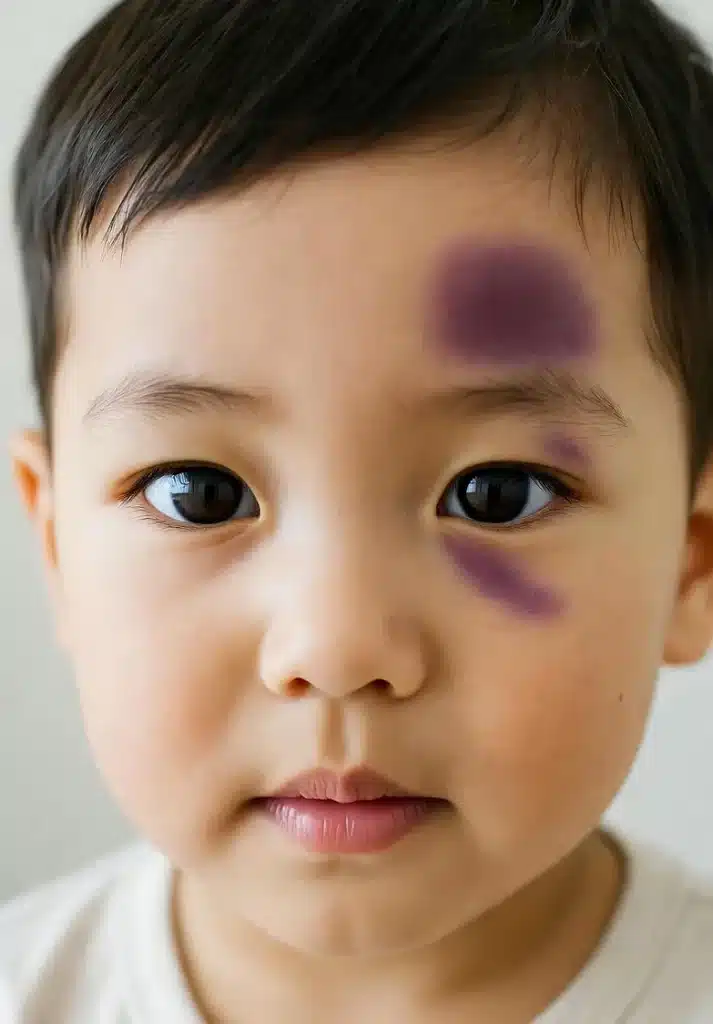- Home
- Sexual Abuse
- Daycare Abuse
- Signs of Daycare Abuse
Signs of Daycare Abuse
- October 17, 2025
-
Sarah Miller
- Fact Checked By Our Attorneys
Daycare should be a safe and nurturing environment, but unfortunately, some children experience abuse or neglect while in the care of others. Recognizing the signs of daycare abuse early is vital for protecting your child. Abuse can take many forms, including physical abuse, emotional abuse, sexual abuse, or neglect, and toddlers may show subtle changes before they can explain what happened.
At Legal Claim Assistant, we help families identify warning signs of child abuse, understand their legal rights, and connect with experienced daycare sexual abuse lawyers who can take action when suspected child abuse.
No Win, No Fee. Let the Best Sex Abuse Attorneys Fight for your Compensation!
Key Takeaways:
Daycare abuse can be physical, emotional, sexual, or result from neglect, and early recognition is crucial to protect children.
Children may show subtle warning signs, including unexplained injuries, regression in previously acquired skills, behavioral changes, nightmares, or inappropriate sexual knowledge.
Abuse often occurs in trusted environments such as daycare centers, making it especially harmful to a child’s sense of safety and trust.
Parents should document injuries and behavioral changes, consult a pediatrician, report concerns to authorities, and consider legal guidance to hold the daycare accountable.
- Free, confidential case reviews from experienced daycare abuse attorneys can help families take the first step toward protecting their child and pursuing justice.
Find out your eligibility in 2 minutes
If your child has been a victim of sexual abuse, you are not alone. Many families face the same fear, pain, and search for justice. Our team can connect you with experienced child sexual abuse attorneys who understand these sensitive cases, protect your child’s rights, and guide your family through filing a legal claim for the compensation and accountability you deserve.
Begin your free and confidential case review today.

What Are the Common Signs of Daycare Abuse?
Recognizing the warning signs of daycare abuse is critical for parents and guardians. Abuse can be physical, emotional, sexual, or result from neglect, and children often show subtle changes long before they can articulate what has happened. A child’s wellbeing at a daycare center depends not only on safety but also on attentive, trustworthy personnel. Understanding these signs can help parents intervene early, protect their child, and, if necessary, report child abuse to the proper authorities.
Below, we break down the most common signs of daycare abuse, organized by type, and explain what to look for in your child’s behavior, physical condition, and emotional state.
Physical Warning Signs
Children who experience physical abuse may show unexplained injuries such as bruises, scratches, burns, or marks on areas not typically injured during play. These injuries often appear in a child’s contact areas that are usually protected, like the back, thighs, or torso. Frequent injuries with vague explanations from the child or daycare personnel should raise concern.
Other physical warning signs include:
- Regression in previously acquired developmental skills, such as potty training or self-feeding.
- Painful urination or bowel movements, which can indicate abuse or neglect.
- Shaken baby syndrome in infants or toddlers, showing unusual lethargy, vomiting, or inconsolable crying.
It’s important to note that not all injuries are caused by abuse, but repeated physical signs, combined with vague explanations, warrant a medical evaluation and discussion with trained professionals.
Emotional and Behavioral Changes
Emotional abuse or distress can manifest in a variety of ways. Children may exhibit behaviors that indicate they are experiencing stress, fear, or confusion about their environment or caregivers:
- Excessive clinginess or extreme fear of separation from parents or caregivers.
- Recurring nightmares, bedwetting, or night terrors, which can appear suddenly in children who previously slept well.
- Sudden aggression, withdrawal, or social isolation, often at home or in interactions with other children.
- Thumb sucking, infant-like behavior, or reverting to an “own world” mentality, which may signal regression caused by trauma.
- Decline in school physical or academic performance or lack of interest in previously enjoyed activities, often tied to emotional distress.
- Excessive crying, anger, or unusual fearfulness during transitions to or from the daycare facility.
Children subjected to emotional abuse may also exhibit low self-esteem, difficulty forming relationships, or emotional issues like anxiety and depression.
Sexual Abuse Indicators
Sexual abuse is often the hardest to detect because children may be unable or too afraid to articulate what has happened. Signs can include both behavioral and physical indicators:
- Knowledge or behaviors inappropriate for the child’s age, such as attempting to demonstrate sexual knowledge or engage in sexual activity with peers or dolls.
- Difficulty walking or sitting, or complaints of genital pain or discomfort.
- Painful urination or bowel movements, which can be physical signs of sexual contact.
- Sudden fear of certain people, places, particularly if the child previously showed comfort or trust.
- Unusual interest in sexual topics or play beyond developmental norms.
Behavioral signs may include:
- Withdrawal from family members or previously close friends.
- Regression to infant-like behaviors, such as thumb sucking or sleeping with security objects.
- Displaying inappropriate sexual behavior to other children or adults, which may reflect learned behavior from sexual abusers rather than inherent curiosity.
Signs of Neglect
Neglect is another form of abuse that often goes unnoticed because it may not leave obvious physical marks. However, signs of child neglect are visible over time through the child’s appearance, health, and overall development:
- Children who are consistently dirty, hungry, or wearing unsuitable clothing for the weather may be experiencing neglect occurring at the daycare facility.
- Delayed medical care for injuries or illness, such as untreated infections or chronic conditions, is a critical sign.
- Extreme tiredness, lethargy, or lack of energy, which may indicate that the child is not receiving adequate sleep, nutrition, or emotional care.
- Behavioral indications such as excessive crying, sudden loss of interest in play, or regressive behavior may accompany neglect.
Neglect can also overlap with emotional abuse and sometimes physical abuse, so any consistent warning signs should be taken seriously. Parents should maintain unannounced visits, document observations, and be prepared to report child abuse if neglect or harm is suspected.
For legal guidance on daycare sexual abuse connect with a Daycare Sexual Abuse Lawyer.

How Do Toddlers Show Signs of Abuse at Daycare?
Toddlers are often unable to articulate experiences of child abuse or explain the physical or verbal abuse they may endure at a daycare center. Because of their limited vocabulary and developmental stage, younger children often show signs of trauma through behavior, body language, and physical symptoms rather than words. Recognizing these subtle cues early can help parents intervene and protect their child from further harm.
FREE!
Find out if you're eligible and may be eligible for compensation.
Get your Free Case Review and Maximize You Payout With the Help From Legal Claim Assistant.
Sudden Personality Changes
One of the most common indicators of abuse in toddlers is a dramatic change in personality. A child who was once happy, outgoing, or playful may suddenly become withdrawn, fearful, or unusually quiet. Conversely, some children may develop aggressive behaviors, showing a fearful or angry manner toward caregivers, siblings, or peers.
These behavioral changes are often a response to verbal abuse, physical injury, or emotional trauma experienced at the daycare facility. Parents may notice that their child:
- Avoids contact with certain daycare providers or refuses to go to daycare.
- Exhibits sudden loss of interest in play or activities they previously enjoyed.
- Shows an angry manner during transitions or routines, which may indicate stress or fear from ongoing maltreatment.
Repeated Physical Complaints
Toddlers may communicate distress through physical symptoms rather than verbal explanation. Parents and caregivers should pay close attention to frequent stomachaches, headaches, or other unexplained discomforts, which may not have a medical cause.
Other physical signs can include:
- Flinching or recoiling when touched, often seen in children who have experienced physical or sexual abuse.
- Unexplained bruises or injuries, sometimes in unusual locations like the back or thighs.
- Changes in sleep patterns, including bed wetting, night terrors, or restless sleep, which may reflect emotional distress.
Repeated physical complaints, especially when combined with sudden behavioral changes, can indicate child maltreatment occurring at a daycare center or during contact with daycare personnel.
Regression in Basic Skills
Another signal that a toddler may be experiencing abuse is the loss of previously acquired developmental skills. Children who have already learned to use the toilet independently or feed themselves may suddenly revert to infant-like behaviors, such as thumb sucking, bed wetting, or excessive clinging.
Regression can also manifest in:
- Loss of language skills or difficulty expressing themselves clearly.
- Difficulty following simple routines or child’s basic self-care tasks.
- Withdrawal from social interaction with other children or family members.
These signs are often subtle and easily overlooked by parents who may initially attribute them to normal toddler behavior. However, in combination with other warning signs, regression can point to abuse and neglect.
Emotional and Social Cues
Toddlers may express distress in fearful or angry manners during daily activities:
- Becoming upset when asked to spend time at daycare or with a particular caregiver.
- Exhibiting sudden movements or startled reactions to touch or loud noises.
- Showing little concern for interacting with peers or adults, preferring to retreat into their own world.
Children may also demonstrate self-protective behaviors, avoiding eye contact or physical contact with others, which can signal that they have been sexually abused or physically harmed.
Verbal and Non-Verbal Indicators
Even though toddlers may have limited speech, some may begin to express concerns through:
- Repeating phrases or words that hint at verbal abuse, inappropriate contact, or threatening behavior they’ve witnessed.
- Crying excessively or showing distress when discussing daycare events.
- Unexplained fear of daycare providers or family members who may unknowingly reinforce the child’s anxiety.
Parents should take note of these cues and consider seeking professional support from child psychologists, pediatricians, or law firms experienced in daycare abuse cases to evaluate the situation further.
When to Take Action if You Suspect Daycare Abuse
If you suspect that your child may be experiencing daycare abuse, taking prompt and informed action is crucial. Early intervention can protect your child from further harm, preserve evidence, and ensure that responsible parties are held accountable. While many parents may feel hesitant or unsure about what steps to take, understanding the proper course of action is essential for the wellbeing of the abused child.
“Recognizing the signs of daycare abuse is the first step in protecting children and ensuring their safety and well-being.”
1. Document Physical Injuries and Behavioral Changes
Keeping a detailed record of your child’s injuries and behavioral changes is one of the most important steps you can take. Documentation can be critical in building a case if constitute child abuse and neglect is confirmed.
- Note the date, location, and nature of such injury, including visible bruises, scratches, or other child’s injuries.
- Record behavioral changes such as sudden changes in personality, withdrawal, aggression, or fearfulness.
- Include context, such as statements from the childcare provider, observations from other children, or changes in school performance.
- Photographs or written logs can provide concrete evidence if the case progresses to criminal charges or legal action.
Detailed documentation helps professionals, investigators, and law firms understand the situation fully and respond appropriately.
2. Speak to Your Pediatrician Immediately
A pediatrician can perform a thorough examination to identify any physical signs of abuse, neglect, or substance abuse exposure. Medical evaluations provide:
- Confirmation of injuries or physical symptoms that may not be visible to parents.
- Professional documentation that may serve as evidence for child abuse and neglect claims.
- Guidance on next steps for addressing both physical and emotional wellbeing.
It’s important to be honest and thorough with your child’s doctor about your concerns, while maintaining sensitivity to the child’s comfort and emotional state.
3. Report Concerns to Child Protective Services or Local Authorities
If there is suspected abuse, parents should report to prevent child abuse immediately to child protective services (CPS) or the appropriate local authorities. Timely reporting ensures:
- Immediate investigation by trained professionals.
- The child’s safety from further harm by a childcare provider or others at the daycare facility.
- Proper legal documentation that may support criminal charges against responsible parties.
Reporting may feel intimidating, but it is a vital step in protecting your child and preventing other children from being harmed. Authorities are trained to investigate while keeping the child’s safety and confidentiality as the top priority.
4. Consider Legal Advice to Hold the Daycare Accountable
In addition to medical and protective action, consulting with an experienced attorney can help parents understand their legal options. A qualified law firm specializing in daycare abuse cases can provide guidance on:
- Filing civil claims to seek compensation for physical, emotional, and psychological harm.
- Navigating interactions with childcare providers, daycare administrators, and insurers.
- Ensuring that criminal charges are pursued if abuse is confirmed.
- Protecting the abused child’s rights throughout legal proceedings.
Legal intervention can also prevent repeat incidents by holding negligent or abusive daycare personnel accountable and encouraging better daycare center safety standards.
FREE!
Find out if you're eligible and may be eligible for compensation.
Get your Free Case Review and Maximize You Payout With the Help From Legal Claim Assistant.
FAQs About Daycare Abuse Warning Signs
Parents often have many questions when trying to identify daycare abuse in their children. Understanding common concerns can help families respond appropriately and protect their child’s wellbeing. Below, we answer some of the most frequently asked questions.
What Are the Six Signs of Abuse Every Parent Should Know?
Many children who experience abuse display subtle or overt warning signs. Six key signs include:
- Unexplained injuries: bruises, scratches, burns, or other physical symptoms.
- Behavioral changes: sudden withdrawal, aggression, or regression in skills previously acquired.
- Emotional distress: excessive crying, fearful or angry manner, low self-esteem, or anxiety.
- Sleep disturbances: recurring nightmares, bedwetting, or night terrors.
- Inappropriate knowledge or behaviors: displaying sexual knowledge beyond their age.
- Avoidance or fear: reluctance to spend time at daycare or interact with certain caregivers.
Recognizing these signs early can prevent further harm and ensure timely intervention.
What Are the Four Signs of Trauma in Children?
Children who have been exposed to abuse or neglect often show trauma through both physical and behavioral cues. Common indicators include:
- Regressive behavior loss of previously acquired developmental skills or returning to infant-like behaviors.
- Emotional instability frequent anger, excessive crying, or mood swings.
- Somatic complaints repeated stomachaches, headaches, or other unexplained child’s injuries.
- Fearfulness reluctance to interact with certain adults, peers, or even family members, often seen when a child flinches at touch.
Parents observing these signs should document them carefully and consult professionals.
What Does the TEN-4 Rule Mean in Child Abuse Cases?
The TEN-4 rule is a clinical guideline used to help identify potential abuse in children. It refers to bruising in:
- Torso
- Ears
- Neck
- Children 4 years or younger
Bruises in these areas or in infants can indicate abuse rather than normal childhood injuries. Pediatricians often use this rule to determine whether further investigation is warranted.
Which Behaviors May Indicate Abuse in Toddlers?
Toddlers may not be able to verbalize experiences of abuse. Key behavioral indicators include:
- Regression in potty training, feeding, or sleep habits.
- Withdrawal from social interaction or avoidance of certain daycare providers.
- Aggression toward peers or family members.
- Fearful or anxious reactions, flinching at touch, or sudden startle responses.
- Excessive crying or clinginess beyond normal toddler separation anxiety.
Parents noticing one or more of these behaviors should document observations, consult a pediatrician, and consider legal guidance if suspected child abuse.
Get Help If You Notice Signs of Daycare Abuse
If you suspect your child is being abused at daycare, trust your instincts. Early action can protect your child and prevent future harm. Steps you can take include:
- Documenting injuries and behavioral changes to maintain a clear record of potential abuse.
- Consulting a pediatrician for medical evaluation and guidance.
- Reporting concerns to child protective services or local authorities to ensure professional investigation.
- Seeking advice from experienced daycare abuse attorneys who understand the legal process and can help pursue accountability.
At Legal Claim Assistant, we offer free, confidential case reviews and connect families with attorneys nationwide who fight for justice. Even if you’re unsure whether abuse has occurred, reaching out ensures that your child’s safety and rights are prioritized.
Remember, some children may not speak about abuse themselves, but their actions like when a child flinches at touch can communicate that something is wrong. Taking action early can make a life-changing difference.
You Deserve Justice. Let Us Help.
Speak with a trusted sexual abuse attorney who will stand by your side, protect your privacy, and fight for the compensation you deserve.
No Win, No Fee. Let the Best Sex Abuse Attorneys Fight for your Compensation!
Under 1 Minute
100% Free
Expert-Reviewed
Private & Secure
© 2025 Legal Claim Assistant. All Rights Reserved.
Terms of Service | Privacy Policy | Contact Us | Marketing Partners
Related Article

What Philips CPAP Machines Are Recalled and Why

